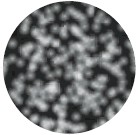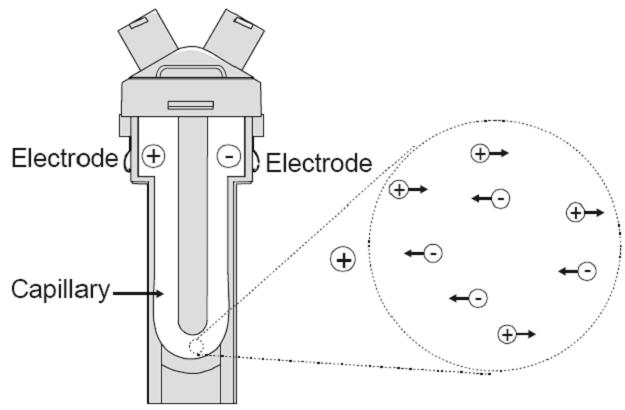The Interdepartmental Equipment Facility
The Zetasizer

The Zetasizer Nano-ZS from Malvern Instruments measures three fundamental parameters of particles in liquid media. These are:
1. Particle size,
2. Zeta potential
3. Molecular weight.
The Zetasizer has an autotitrator accessory and can perform series of automatic operations such as measurements of the zeta potential as a function of pH.
Particle Size Measurements

The Zetasizer measures particle size by monitoring brownian motion in the liquid. Particles move about randomly in the liquid and their speed reflects their size: large particles move slowly while small particles move quickly. The measuring range of the Zetasizer is between 0.6 nm and 6 micron.
For size measurements, the liquid sample is introduced into the Zetasizer in a standard all-transparent cuvette which is illuminated by a laser at 633 nm. The light scattered by the particles is monitored by a detector. The speed of the particles and their size is calculated by analyzing the fluctuations in the scattered light intensity.

Zeta Potential Measurements
Most particles in aqueous dispersions carry a layer of electric surface charge, which is only partially neutralized by a second layer of counter ions. Each particle of this kind moves in an electric field together with its double layer and a mantle of adhering solvent. Zeta Potential is the difference in electrical potential between the particle and the bulk liquid in which it moves.

Zeta potential is used to assess the stability of suspensions: flocculation and precipitation will occur if the electrical repulsion between the particles does not exceed the attractive van der Waals forces.
Particles with zeta potentials more positive than +30mV or more negative than -30mV are considered stable.
The electrophoretic mobility of the particles, i.e. the speed which they achieve in an electric field, is linearly related to their zeta-potential. The Zetasizer indeed measures zeta potential by timing particle speed in an electric field. The particle suspension is injected into a "folded capillary cell", equipped with electrodes on both sides, and the particle speed down the applied electric field, is monitored with a laser beam.